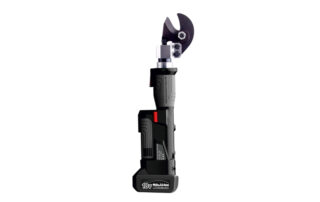Carrying out overhead and traction line installations requires caution, especially when these lines intersect. It is worth taking a closer look at the restrictions that apply to investors responsible for building lines at crossings and proximities. In Poland, three levels of restrictions are applied, where the first is the mildest and the third – the most stringent.
Safety Rules at Overhead Line Crossings
The expansion of infrastructure makes it inevitable for different types of lines to cross. However, this requires the implementation of even stricter safety rules than those applied on sections without crossings, where equipment such as steel wire slings are used, selected for their load capacity according to the type of overhead line.
There are significant differences between a crossing and a proximity. A crossing occurs simply when two lines intersect – these can be two electrical lines or, for example, an electrical line crossing a building, a road, or other infrastructure. A proximity occurs when the horizontal projection distance between one electrical line and another is less than half the suspension height of the highest conductor. The highest suspension point of the approaching line is taken into account.
At crossings and proximities, it is important to remember that:
- Power lines cannot be routed above chimneys or roofs covered with flammable materials,
- Crossings with lines of 110 kV or higher are not permitted,
- The span located above the crossing should be designed to be as short as possible,
- Poles carrying voltages above 1 kV should not be installed in proximity areas,
- Residential and industrial buildings cannot intersect with lines of 220 kV or higher.
Levels of Restrictions at Crossings and Proximities of Power Lines
The levels of restrictions vary depending on the object and the rated voltage of the line. The easiest situation, of course, is routing overhead lines in undeveloped areas such as fields, meadows, or wastelands. In most cases, first-level restrictions are sufficient. This applies, for example, to public roads, bus stations, parking lots, residential buildings, farm structures, industrial facilities, or railway lines (but only when crossing lines with a rated voltage up to 1 kV).
The second level of restrictions (for lines with voltages up to 1 kV) applies, for example, to crossings with telecommunications lines located above, overhead lines above (with voltages up to 1 kV), or overhead lines with voltages in the 1–60 kV range located below. For railway lines, crossings with power lines above 1 kV are generally not recommended. However, if such a crossing is necessary, the second level of restrictions must be applied.
The highest, third level of restrictions applies to crossings involving lines with rated voltages above 1 kV. This includes, for example, crossings with public roads, bus stations, parking areas, or railway lines. In some cases, crossings are completely prohibited – for example, at explosive or flammable material storage sites. Proximities may be allowed but must follow specific safety arrangements. The same applies to airports, where both crossings and proximities are carried out according to individual guidelines.
Railway Line Crossings
Railway lines, including electrified ones, inevitably intersect with other types of infrastructure. Increasingly, traditional overhead lines are being replaced with cable lines. Although their installation involves higher costs, they are safer and less prone to failure. Building a cable line requires professional equipment such as battery cable cutters. This ensures precise cutting of the cable and eliminates the risk of damage and the need to purchase new material. For connecting cables, a cable crimping tool is essential – such tools contribute to the long service life of cable lines. When cable lines intersect with railway lines, safety rules must also be followed. Underground cable lines should be laid in ducts at a depth of at least 1.5 meters from the top surface of the rail and at least 0.5 meters from the bottom of the drainage ditch.
During crossings and proximities with power lines, it is essential to prevent obstruction of railway signals, interference with signaling and control circuits, and disruptions to railway traffic. The crossing should, of course, be as short as possible, and it is recommended to cross the lines at a right angle. For low-voltage power lines, overhead crossings are allowed. However, if the railway line is electrified, particular care must be taken to calculate the vertical distance between the power network and the traction wires. The calculation formula varies depending on the voltage.
Crossings and proximities are areas where special caution is required. Here, not only the rated voltage of the line must be considered, but also the location and other infrastructure elements in the vicinity.

